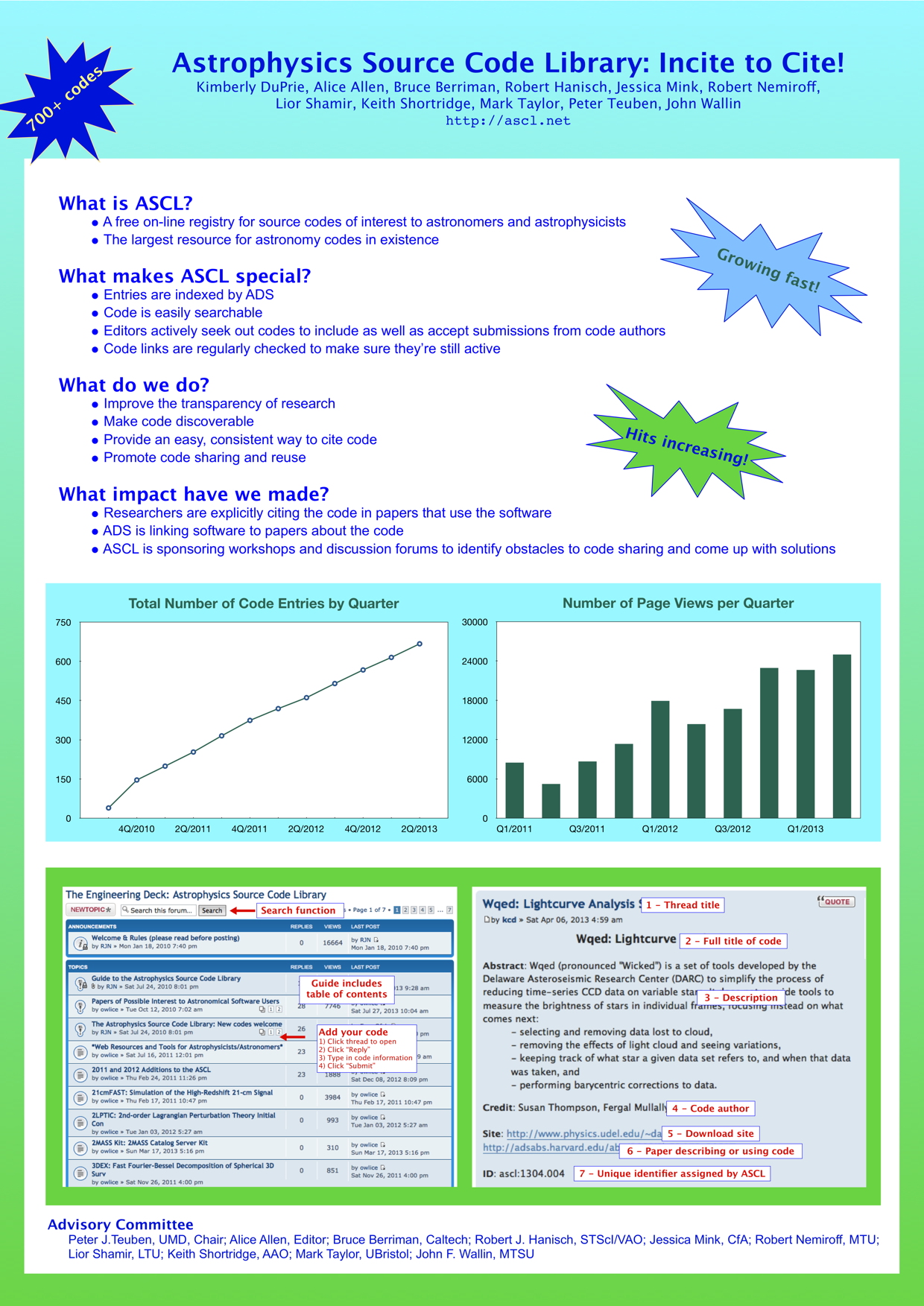… are being posed in the Ideas for Advancing Code Sharing (or A Different Kind of Hack Day) Birds of a Feather (BoF) session at ADASS. The eight questions ask how to deal with three categories of concerns: factors which inhibit sharing, factors which encourage sharing, and overall community issues. The questions are below; do you have answers to them? Please share them if you do!
The introductory slides for the BoF are available online. We will post what comes out of the discussions shortly after the BoF.
Mitigating inhibitors
How do we encourage release even if the code is “messy”?
How do we reduce expectations of support when coders don’t want to support code and still encourage code release?
How can universities be convinced to change policies which prohibit software publication?
Increasing incentives
What can we do to encourage citations for codes?
Beyond citations, what can we do to give code authors recognition for writing and releasing their software?
How can we measure the impact of a code on research and its value to the community?
Community factors
What roles might journal publishers and funding agencies have in furthering code release, and how can the community influence them to take on that role?
What else can we do to have code release recognized as an essential part of research reproducibility

